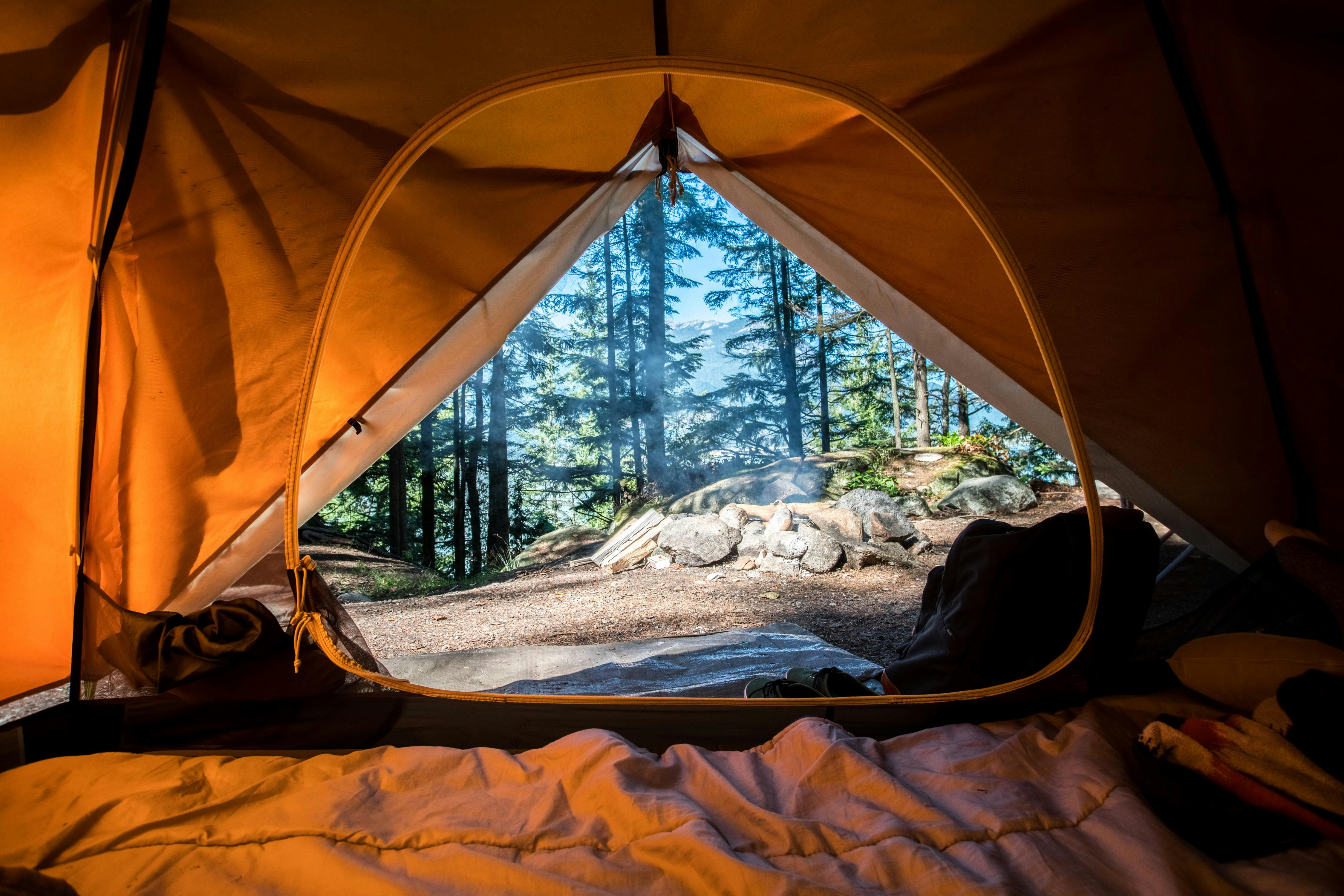Are you wondering if airbeds are a good choice for camping? In this article, we will explore the benefits and drawbacks of using airbeds while camping, so you can make an informed decision about are airbeds good for camping. We will discuss the comfort, portability, and durability of airbeds, and provide tips on how to choose the best one for your camping trip. By the end of this article, you will have a clear understanding of whether airbeds are a suitable option for your outdoor adventures.
Table of Contents
Benefits of Using Airbeds for Camping
When it comes to camping, getting a good night’s sleep is essential for a successful and enjoyable trip. While many campers opt for sleeping bags or mats, airbeds have become increasingly popular for their comfort and convenience. In this article, we will explore the benefits of using airbeds for camping, factors to consider when choosing one, different types of airbeds available, tips for using them effectively, common concerns and misconceptions, alternatives to airbeds, personal experiences and opinions, environmental impact, and health considerations. So, if you’re wondering whether airbeds are good for camping, read on to find out!
Comfortable Sleep
One of the main reasons why airbeds are favored by campers is the comfort they provide. Unlike traditional sleeping mats, airbeds offer a more cushioned sleeping surface that mimics the comfort of a regular mattress. The added height also makes it easier to get in and out of bed, especially for individuals with mobility issues. Additionally, airbeds offer better insulation from the cold ground, keeping you warm and snug throughout the night. With the right airbed, you can wake up feeling well-rested and ready for another adventurous day in the great outdoors.
Easy to Set Up
Gone are the days of wrestling with tent poles and struggling to secure sleeping mats. Airbeds are incredibly easy to set up, requiring minimal effort and time. Most airbeds come with built-in or external air pumps that quickly inflate the bed to its desired firmness with a simple push of a button or manual pumping. Deflation is just as easy, allowing you to pack up and move on to your next camping spot effortlessly. With airbeds, you can spend less time on setup and more time enjoying your camping experience.
Convenient Portability
As camping enthusiasts, we all know the importance of packing light and maximizing space in our backpacks or vehicles. Airbeds are designed with portability in mind, making them compact and lightweight. They can easily be deflated and rolled up into a small carry bag, taking up minimal space in your camping gear. Whether you’re going on a hiking adventure or setting up camp near your vehicle, airbeds are a convenient bedding option that won’t weigh you down or take up valuable storage space.
Factors to Consider When Choosing an Airbed for Camping
Now that we’ve established the benefits of using airbeds for camping, let’s delve into the factors you should consider when choosing the perfect airbed for your camping needs.
Size and Weight
First and foremost, you’ll need to decide on the size of the airbed. Consider the number of people who will be sleeping on it, as well as the available space in your tent. Airbeds are typically available in single, twin, queen, and king sizes. It’s also important to take into account the weight of the airbed, especially if you’ll be carrying it for long distances. Opt for lightweight options that won’t become a burden during your camping trips.
Durability and Material
Camping can be a rugged experience, so you’ll want an airbed that can withstand the elements and rough terrain. Look for airbeds made from durable materials such as PVC or reinforced vinyl. These materials are less likely to puncture or tear, ensuring that your airbed will last for multiple camping trips. Additionally, consider the thickness of the bed. Thicker airbeds provide better support and are less prone to deflating during the night.
Inflation and Deflation Mechanism
The ease of inflating and deflating your airbed can make a significant difference in your camping experience. Some airbeds come with built-in manual pumps, which require you to manually pump air into the bed until it reaches the desired firmness. While these may be more time-consuming, they can be handy when camping in remote areas without access to electricity. On the other hand, airbeds with built-in electric or battery-powered pumps offer quick and hassle-free inflation. Consider your camping environment and accessibility to electricity when choosing the right inflation and deflation mechanism for your airbed.

Types of Airbeds Suitable for Camping
Now that you have a better understanding of what to look for in an airbed, let’s explore the different types of airbeds that are suitable for camping.
Self-Inflating Airbeds
Self-inflating airbeds are a popular choice among campers, as they combine the convenience of an airbed with minimal effort. These airbeds are equipped with a foam core that helps the bed inflate itself once the valve is opened. While they may not offer the same level of comfort as traditional airbeds, self-inflating airbeds are lightweight and easy to pack, making them ideal for backpacking and hiking trips.
Manual Inflation Airbeds
Manual inflation airbeds require you to manually inflate the bed using a pump or by blowing air into the valve. These airbeds are often more affordable than self-inflating or electric pump airbeds. However, they do require more time and effort to set up and deflate. Manual inflation airbeds are a good option for campers on a budget or for those who prefer a more hands-on approach to their camping equipment.
Battery or Electric Pump Airbeds
If convenience is your priority, battery or electric pump airbeds are the way to go. These airbeds come with built-in pumps that can be powered by batteries or plugged into an electrical outlet. With a push of a button, you can quickly inflate or deflate the bed, saving you time and effort. Battery-powered airbeds are ideal for remote camping trips where access to electricity may be limited, while electric pump airbeds are great for car camping, where you have access to power sources.
Tips for Using Airbeds Effectively in Camping
While airbeds provide comfort and convenience, there are a few tips to keep in mind to ensure their optimal usage during your camping trips.
Choosing an Appropriate Campsite
When setting up your tent and airbed, choose a campsite that is flat and free from sharp objects that could potentially puncture your airbed. Clear the area of rocks, sticks, and debris before laying down your airbed to prevent any damage to the mattress. Additionally, consider the temperature and weather conditions of your campsite. Extreme cold or heat can affect the air pressure inside the bed, so make sure to adjust the firmness accordingly.
Preparing the Ground for the Airbed
To enhance the comfort and longevity of your airbed, it’s important to prepare the ground before setting it up. Place a thick groundsheet or tarp underneath the airbed to provide an extra layer of protection from moisture, rocks, and uneven terrain. This will help prevent punctures and ensure a more comfortable sleep.
Proper Inflation and Deflation Techniques
When inflating your airbed, make sure to follow the manufacturer’s instructions for optimal firmness. Overinflating the bed can cause discomfort and may lead to the bed bursting, while underinflating can result in poor support. Similarly, when deflating the airbed, ensure that all the air is released before folding and packing it away. Proper inflation and deflation techniques will not only prolong the life of your airbed but also provide a better sleeping experience.

Common Concerns and Misconceptions about Airbeds for Camping
Despite the numerous benefits of using airbeds for camping, there are some common concerns and misconceptions that need to be addressed.
Lack of Insulation and Warmth
One of the concerns about airbeds is their perceived lack of insulation, especially compared to sleeping bags or mats. While it is true that airbeds are not as well-insulated as some other bedding options, they still provide superior insulation compared to sleeping directly on the ground. Adding a thermal blanket or sleeping bag on top of the airbed can help enhance insulation and keep you warm throughout the night.
Air Leakage and Punctures
Another concern with airbeds is the possibility of air leakage or punctures during camping trips. While this can happen, it is relatively rare if proper precautions are taken. Choosing a durable airbed made from high-quality materials and regularly inspecting it for any signs of damage or wear can help prevent leaks or punctures. Additionally, bringing a patch kit or repair adhesive can be a lifesaver in case of any minor damages.
Compactness and Storage Issues
Some campers worry about the size and storage of airbeds, especially when it comes to packing them for camping trips. However, modern airbeds are designed to be compact and lightweight, making them easy to fold, roll, and pack into small carry bags. The convenience and comfort they provide far outweigh any minor storage concerns.
Alternatives to Airbeds for Camping
While airbeds are a popular choice for camping, there are alternative bedding options that may suit your needs and preferences.
Sleeping Pads and Mats
Sleeping pads and mats are lightweight and compact options for camping. They are usually made from foam or inflatable materials and offer cushioning and insulation from the ground. Sleeping pads and mats are ideal for backpackers and hikers who prioritize portability but are willing to sacrifice some comfort.
Hammocks
Hammocks have gained popularity among campers due to their versatility and comfort. They are lightweight, easy to set up, and provide an alternative sleeping experience. Hammocks are particularly suitable for camping in warm climates or wooded areas where securing the hammock between trees is possible.
Cots
Cots are elevated sleeping surfaces that provide comfort and support similar to airbeds. They are sturdier than airbeds but may require more effort to set up and transport. Cots are a great option for car camping trips or when weight and portability are less of a concern.

Personal Experiences and Opinions on Airbeds for Camping
To provide a well-rounded perspective on the topic, let’s dive into personal experiences and opinions from campers who have used airbeds for camping.
Testimonials from Campers
“I’ve been using airbeds for camping for years, and I can’t imagine sleeping on anything else. The comfort they provide is unmatched, and I always wake up feeling refreshed and ready to tackle the day’s activities.”
“Airbeds have been a game-changer for our family camping trips. With young kids, it’s important to have a comfortable and familiar sleeping environment, and airbeds offer just that. We love how easy they are to set up and pack away.”
Product Reviews and Ratings
Upon researching various airbeds available in the market, it’s clear that many campers have placed their trust in these bedding options. Positive product reviews and high ratings highlight the comfort, durability, and convenience of airbeds for camping. Of course, it’s important to carefully read reviews and choose an airbed that suits your individual needs and preferences.
Pros and Cons: Airbeds vs. Other Sleeping Options
To further evaluate the suitability of airbeds for camping, let’s examine the pros and cons of airbeds compared to other popular sleeping options.
Pros of Airbeds
- Superior comfort and insulation
- Easy to set up and pack away
- Compact and lightweight for portability
- Wide range of options to cater to different needs and budgets
Cons of Airbeds
- Possibility of air leakage or punctures
- Requires an inflation mechanism
- Limited insulation compared to sleeping bags or mats
Environmental Impact of Airbeds in Camping
As responsible campers, it’s important to consider the environmental impact of the products we use. Let’s explore the environmental aspects of airbeds in camping.
Sustainable Airbed Materials
Many airbed manufacturers are conscious of the environmental impact and have started using more sustainable materials in their products. Look for airbeds made from recycled or eco-friendly materials, such as organic cotton or recycled PVC. By choosing sustainable options, you can minimize your carbon footprint and contribute to a cleaner environment.
Inflatable Bed Disposal and Recycling
When it’s time to retire your old airbed, don’t just toss it in the trash. Check with your local recycling centers or waste management facilities for proper disposal methods. Some airbed manufacturers also offer recycling programs, allowing you to send back your old bed for proper recycling or disposal.
Reducing Waste and Eco-Friendly Alternatives
While airbeds can be a convenient and comfortable option for camping, it’s worth considering alternative eco-friendly options as well. Sleeping pads or mats made from natural materials such as cork or organic cotton are biodegradable and have a lower environmental impact. Using these alternatives can help reduce waste and lessen the strain on natural resources.
Health Considerations when Using Airbeds for Camping
Now, let’s explore some health considerations when using airbeds for camping.
Back Support and Posture
Sleeping on an improper mattress or surface can lead to discomfort and even back pain. It’s important to choose an airbed that provides adequate support for your back and promotes proper posture. Look for airbeds with additional support features, such as built-in lumbar support or adjustable firmness settings.
Allergies and Asthma
For individuals with allergies or asthma, it’s crucial to choose an airbed that is hypoallergenic and resistant to dust mites and allergens. Some airbeds come with antimicrobial treatments or removable, washable covers that help maintain a clean sleeping environment.
Preventing Mold and Mildew
Proper maintenance is key to prevent the growth of mold and mildew on your airbed. Ensure that the airbed is completely dry before packing it away to prevent moisture buildup. If the airbed becomes wet during camping, wipe it down and allow it to air dry before storing it. Regularly inspect the bed for any signs of mold or mildew and take immediate action to prevent further growth.
Conclusion
In conclusion, airbeds are indeed good for camping, offering numerous benefits such as comfortable sleep, easy setup, and convenient portability. When choosing an airbed for camping, consider factors like size and weight, durability and material, and the inflation mechanism. Self-inflating, manual inflation, and battery or electric pump airbeds are all suitable options depending on your camping style and preferences. By following tips for using airbeds effectively, addressing common concerns and misconceptions, exploring alternatives, considering sustainability and health factors, you can make an informed decision about whether airbeds are the right choice for your camping adventures. Rest well, campers!